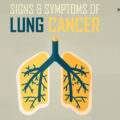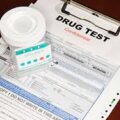
Alcohol poisoning occurs when a person drinks a toxic amount of alcohol, usually over a short period of time (binge drinking). Drinking too much and too quickly can lead to significant impairments in motor coordination, decision-making, impulse control, and other functions, increasing the risk of harm. Continuing to drink despite clear signs of significant impairments can result in an alcohol overdose.
Every year, at least 2,200 people die from alcohol poisoning. Statistics show men between the ages of 35 and 64 are typically the ones who die from it.
What Is an Alcohol Overdose?
An alcohol overdose occurs when there is so much alcohol in the bloodstream that areas of the brain controlling basic life-support functions—such as breathing, heart rate, and temperature control—begin to shut down. Symptoms of alcohol overdose include mental confusion, difficulty remaining conscious, vomiting, seizure, trouble breathing, slow heart rate, clammy skin, dulled responses such as no gag reflex (which prevents choking), and extremely low body temperature. Alcohol overdose can lead to permanent brain damage or death.
What tips the balance from drinking that produces impairment to drinking that puts one’s life in jeopardy varies among individuals. Age, sensitivity to alcohol (tolerance), gender, speed of drinking, medications you are taking, and amount of food eaten can all be factors.
Determining how much alcohol is in the blood is measured by blood-alcohol content (BAC) as a percentage.
It doesn’t take a lot of alcohol in the blood to cause problems:
- Between 0.0 and 0.05%: This level is considered a mild impairment. Symptoms typically include some difficulty speaking and remembering things. The person may seem clumsy, and they may begin to feel a little sleepy.
- Between 0.06 and 0.15%: The person has reached increased impairment. The effects of mild impairment get worse. A significant impact on driving skills begins to show up.
- Between 0.16 and 0.30%: The effects of increased impairment get worse. Judgment and decision-making skills become very impaired. The person may suffer from blackouts. Vomiting is common.
- Between 0.31 and 0.45%: The situation is now life-threatening. At this point, the person has a significant risk of dying from the depressant effect causing vital life functions to slow too much.
Being poisoned by alcohol can damage your health or even put your life in danger. Studies indicate that alcohol poisoning is a leading cause of poisoning globally, especially among young people.
How To Know If You Have Alcohol Poisoning, The Next Day
Because of how dangerous alcohol poisoning can be, it is important to understand the symptoms. Common signs of alcohol poisoning include:
- Smelling like alcohol
- Confusion or slurred speech
- Poor coordination or stumbling
- Damp or clammy skin
Some symptoms of alcohol poisoning are more serious. These include:
- Severe confusion
- Trouble staying awake
- Throwing up
- Seizures
- Slow breathing (fewer than eight breaths per minute)
- Long pauses between breaths (10 seconds or more)
- Very slow heartbeat
- Low body temperature
- Bluish or pale skin
- Slow responses (such as gag reflex)
How do you test to see if someone has alcohol in their system?
There are two main ways to check someone’s blood-alcohol content:
- Breathalyzer: As you drink, the alcohol goes through your bloodstream to your lungs. There, it evaporates into the lungs, and you breathe it out. As you blow into the breathalyzer, it can estimate your BAC by how much alcohol it detects in your breath.
- Blood test: A lab technician draws a small amount of blood with a needle. The technician then analyzes for the BAC. The blood test is most accurate within six to 12 hours after the last drink you consume.
READ: How Long To Abstain From Alcohol To Repair Liver?





